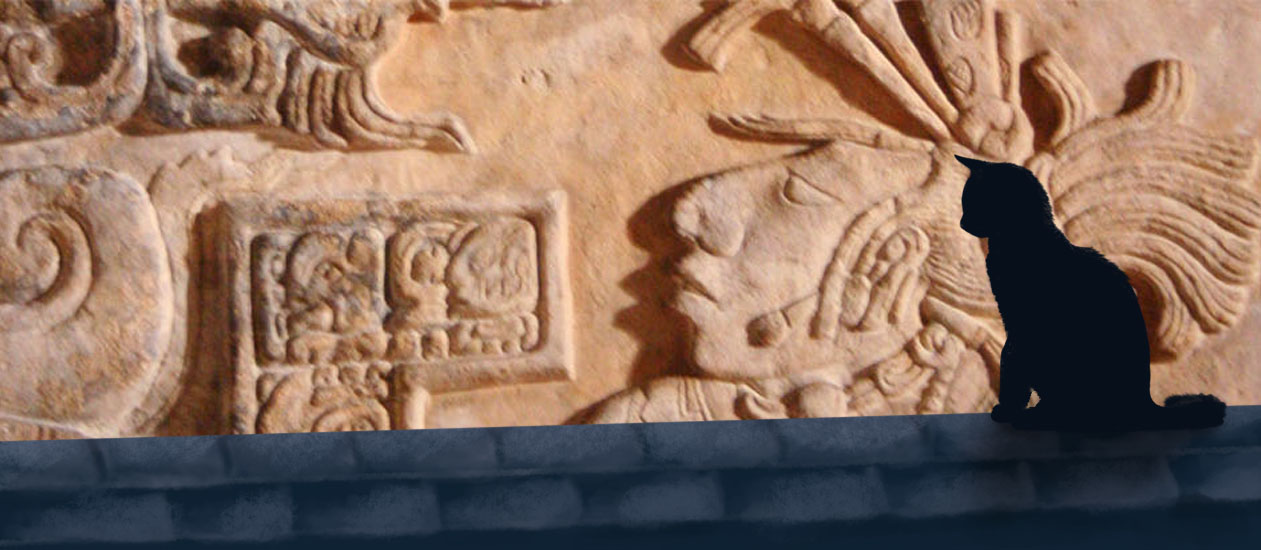Teyacapan ☠
The savages speak highly of some legendary medicine man by the name of Teyacapan. This allegedly brilliant doctor never even discovered the humours and focused his "healing" on killing "invisible demons" within a sick person. Their culture is so backward.
Teyacapan never felt like a world-changing hero during his lifespan. In fact, it would take more than 800 years after his death for his ground-breaking research to reach its full potential. Even now, the peoples of the New World have no idea what they avoided thanks to his work in medicine back in the 7th century.
Mental characteristics
Personal history
Teyacapan was born the classical Maya city of Calakmul to a wealthy family. He was the first born of five children, and at the age of 14 he became apprenticed to a medicine man whose name has been lost to history. Teyacapan learned the art of healing from his master and by the time he was 25 he had surpassed him in some fields.
Teyacapan's expertise had always lain in the spiritual side of healing. He struggled to set bones or suture wounds neatly, but he was greatly respected for his ability with herbs and rituals. When the king's wife gave birth, he requested Teyacapan attend her labour within the sweatbath.
Pathstones
Although they were called "gods' stones" by many people in the New World, the tradition of using crystals to contain vesanmer thrived on both sides of the Atlantic. The main difference is that in the New World, they were almost exclusively used for healing purposes.
The stones gave off energy, and packing them around an ill or injured person could provide them the energy they needed to fight off the sickness. Even more, inscribing a healing incantation on a crystal and allowing it to soak in a potion gave that healing potion strong restorative properties. Teyacapan thought it could go further.
Disease, it was believed, was caused by a person's soul being attacked by evil spirits. Maya medicine centred around either providing the patient with the strength to fight off the demon themselves, or the medicine men attacking the demon and trying to get rid of this. Teyacapan thought that gods' stones could be used to attack the evil spirits directly.
The New Formula
Teyacapan studied the small amounts of Babelian they knew in order to create a new formula that would do more than simply strengthen or accelerate a healing process. Teyacapan's formula was constructed to target and destroy living things within the patient.
Other medicine men had attempted similar formulas in the past, from all over the continent. What made Teyacapan's special was that he was able to target only harmful entities, as he didn't want to risk destroying any benevolent spirits or the presence of a god that was attempting to lend aid. In short, though he didn't understand the true biological processes, he had created a tool that could target and kill viruses and bacteria.
The Maya and Beblian
In Europe,Babelian is thought to be the language spoken by humanity before the Tower of Babel, and is God's true tongue. The same language was used in the New World, where it was thought to be the language of the spirit world by many peoples. New World scholars had more artifacts with the script on it than had been uncovered in Eurasia, giving them a more advanced command of vesanmer until the 16th centuryEmployment
After his success with creating the "spirit banisher" stone, Teyacapan became the most celebrated medicine man in Maya society. He was offered a position in the royal court of Calakmul and spent the rest of his life working for the king and tending not only to the royal family, but any sick or injured citizen who came to the palace seeking help from the renowned healer.
Accomplishments & Achievements
The "spirit banisher" formula that he developed changed medicine in the New World forever. The formula spread along trade networks over the next few centuries, until the technique to cure bacterial or viral diseases was known by the Arctic Dorset and the Mapuche of the southern cone. Outside of Maya lands, stones engraved with Teyacapan's formula became known as "Maya Stones" in the local languages, although the name 'Maya' was often distorted by people so far away that they had no concept of who the Maya even were.
The formula was not foolproof. There were always illnesses too severe, or stones improperly inscribed, or "invisible demons" too strong to be killed, but it helped. In the 16th century, when horrible new diseases began to appear after contact with Europeans, it really helped. Although smallpox spread through their populations, it was unable to take a foothold and more often then not, the patients recovered with the help of the formula written by a Maya medicine man 800 years before.
Though the Europeans were initially skeptical of this indigenous healing method, they had to acknowledge its effectiveness and by the 17th century, "Maya Stones" were found in Europe and studied alongside European advancements at the Palais d'Or.


